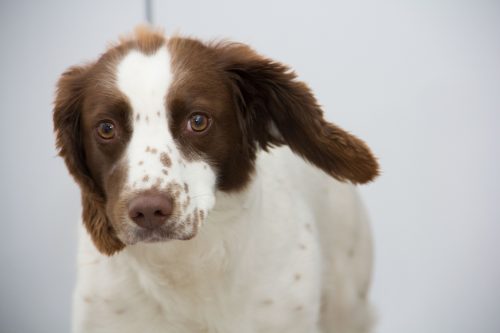As a loving dog owner, concern for the safety and wellness of your dog is a top to-do on your priority list. And yet, despite spending good money to buy your dog a comfortable bed, he’s still seemed to develop painful-looking patches on his elbows. What gives?
“Pressure sores,” or decubital ulcers, are callused areas on or under the skin over pressure points. They are caused by force, friction, or trauma to a dog’s skin and tissues, and usually result from contact with hard surfaces over long periods of time.
Read on to see how you can treat, and prevent, your furry friend from facing pressure sores.
What causes pressure sores on dogs?
Pressure sores in dogs are often caused by chronic trauma to a dog’s skin and subcutaneous tissue — the fatty layer beneath the skin. These sores occur when pressure on the affected area constricts blood vessels, decreasing blood supply to the area.
Unfortunately, prolonged pressure to the area can damage the tissue and, ultimately, cause tissue death, plus calluses or hygromas. Pressure sores most often occur on the elbow, but can also develop in other parts of the body.
Is my dog at risk for pressure sores?

Any dog, regardless of breed or mix, can develop pressure sores. However, they are most common in larger dogs, such as the:
- Mastiff
- Cane Corso
- Irish Wolfhound
- Great Dane
- Labrador Retriever
- And other large dog breeds
Unfortunately, the weight and size of these large and giant-breed dogs are heavily weighted on bony pressure points, specifically elbows and hocks, when the dog is laying down.
Dogs that lay down for prolonged periods of time, especially those housed on hard surfaces without soft bedding, are at increased risk for pressure sores. Those with compromised immune systems are also more likely to develop infections at the sites of their sores.
In addition, malnourished or emaciated dogs are predisposed as they lack the adequate padding around their bony areas.
What are the symptoms of pressure sores on dogs?
Pressure sores in dogs are fairly obvious to the naked eye. They often occur on a dog’s elbows, hips, hocks, chest, or side of the legs, but can develop anywhere on the body where harsh contact takes place. Sometimes dog owners don’t even notice the condition until the sores open and ulcerate.
To see if your dog has pressure sores, pay attention for the following symptoms:
- Hairless, wrinkled, reddish or purplish pads of thickened skin over a bony pressure point
- Fluid-filled area over a bony area
- Ulcer, abscess, or open wound over a bony area
- Lameness: that is, trouble walking or standing as a result of dysfunction in the locomotor system
- Licking at the affected area, often accompanied by a stained hair coat at the site of the sore from bleeding
If you suspect your dog has pressure sores, a visit to your vet is your best bet to proper diagnosis and treatment.
How do I prevent pressure sores on my dog?

The best way to prevent pressure sores in your dog is to furnish your house with lofty, well-padded bedding in the areas he chooses to rest. Choose soft, thick, well-padded beds to lie on, consisting of high-quality material like egg crate foam, thick foam rubber, waterbeds, or inflatable airbeds.
If your dog is medically recumbent, he should be physically turned, or have his position changed, every 2 to 3 hours. This prevents concentrated pressure on his thin-skinned bony areas. Massage, hydrotherapy, and other forms of physical therapy are also helpful in stimulating blood circulation to affected sites.
How do I treat my dog’s pressure sores?
The best way to treat a dog with pressure sores is to provide well-padded, thick, soft sleeping surfaces to prevent further trauma. If a pressure sore is not infected, soft bedding—along with proper observation to see how much time he’s spending on the floor—might be all your dog needs to recover. There are many dog beds, mattresses, and fabric-covered foam pads on the market that will take the pressure off your dog’s bony areas when he rests or sleeps.
If the pressure sore is infected, however, your veterinarian may prescribe medication in order to heal. A typical course of oral antibiotics can take 4 to 6 weeks, minimum.
If your dog has a hygroma—fluid-filled sacs over the area of pressure—your veterinarian will need to drain and flush the lesion. This form of treatment can also take several weeks to complete.
Unfortunately, because of their vulnerable location where constant friction occurs, pressure sores can be difficult to avoid or even treat. But the sooner they are caught and treatment administered, the better, allowing your dog to live a happy, comfortable life.
Sources:
- “Dog Pressure Sores (Calluses).” Petwave, Accessed 7 Aug 2017. www.petwave.com/Dogs/Health/Pressure-Sores.aspx.
- “Treatment and Prognosis of Pressure Sores in Dogs.” Petwave, 16 July 2015, Accessed 7 Aug 2017. www.petwave.com/Dogs/Health/Pressure-Sores/Treatment.aspx.
- “Skin Ulcers in Dogs – Symptoms, Causes, Diagnosis, Treatment, Recovery, Management, Cost.” WagWalking, 30 Sept. 2015, Accessed 7 Aug 2017. www.wagwalking.com/condition/skin-ulcers.
- Chester, Jo. “Bedsores in Dogs.” The Nest, 21 Nov. 2017, Accessed 7 Aug 2017. www.pets.thenest.com/bedsores-dogs-7449.html
- “Skin Ulcers in Dogs.” PetMD, Accessed 7 Aug 2017. www.petmd.com/dog/conditions/skin/c_multi_dermatoses_erosive_ulcerative.




